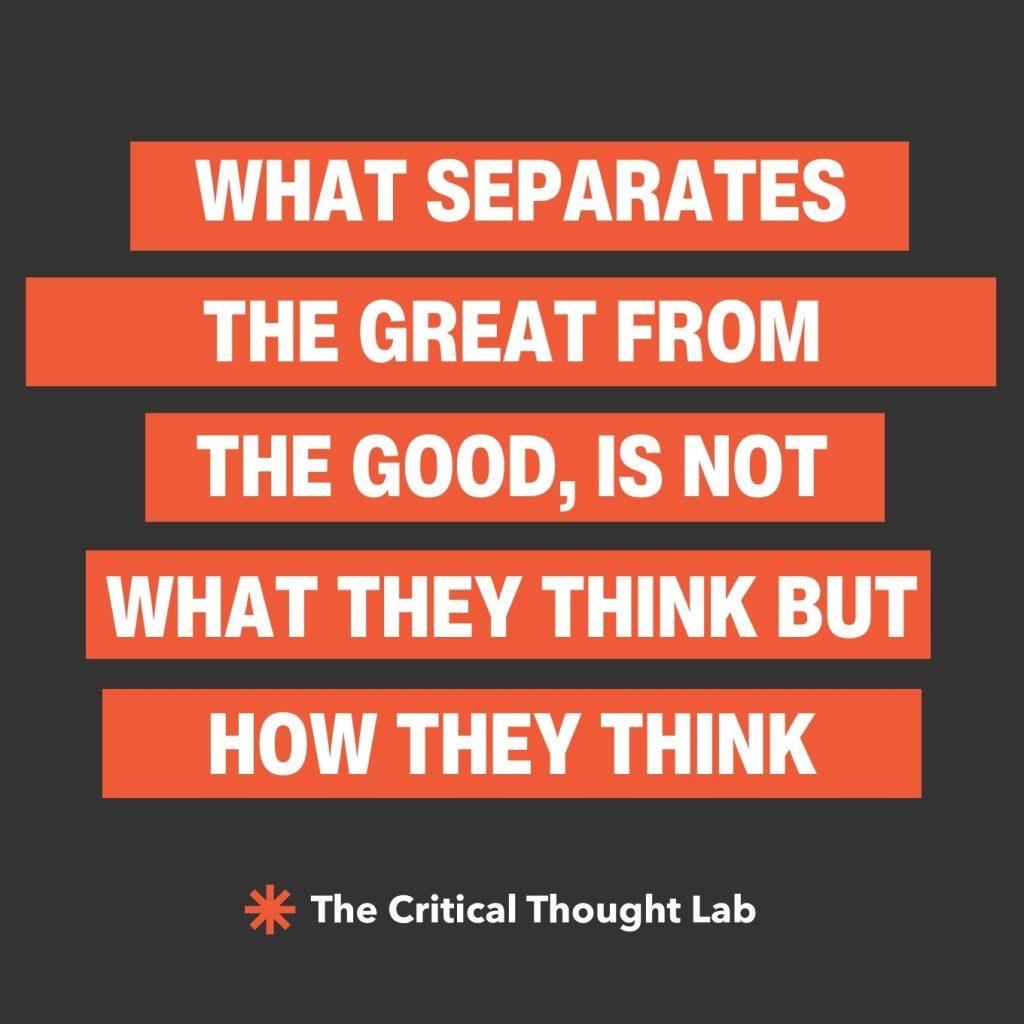The Importance of Critical Thinking for Effective Survey Design
By Simon Crawford-Welch, PhD, RRP, Founder & Editor, The Critical Thought Lab
We all know that data is a cornerstone of decision-making. Surveys, as a primary tool for gathering data, must be meticulously crafted to ensure accuracy, relevance, and utility. Critical thinking plays an indispensable role in this process, influencing the quality of information collected and, consequently, the insights drawn from it.
Critical thinking in survey design begins with clearly defining the objectives. What decisions will the survey inform? What specific information is needed to meet these objectives? These foundational questions set the stage for a survey that is purpose-driven and results-oriented. Without a sharply defined purpose, surveys risk collecting data that is either irrelevant or too vague to be actionable.
Once the objectives are established, critical thinking dictates a careful consideration of the target audience. Who are the respondents, and what are their characteristics? Understanding the audience is crucial, as it informs the language, tone, and context of the questions. It also ensures that the survey reaches the appropriate demographic, yielding results that are representative of the group being studied.
The construction of the questions is where critical thinking is most visibly applied. Each question must be scrutinized for bias, leading language, and ambiguity. The goal is to craft questions that are neutral, clear, and concise. Critical thinkers will also evaluate the question format, deciding between open-ended questions, which can provide depth and nuance, and closed-ended questions, which are easier to analyze quantitatively.

Furthermore, the sequence and flow of questions warrant careful planning. The order can significantly impact a respondent’s answers due to factors like priming and fatigue. A well-structured survey guides respondents naturally from one question to the next without leading or influencing their responses unduly.
Critical thinking also extends to the piloting phase of the survey. Before a full rollout, a critically designed survey is tested on a small, representative sample. This process uncovers any issues with question clarity, sequencing, or technical problems with the survey delivery platform. The feedback gathered is then used to refine the survey, ensuring that the final version will generate the highest quality data possible.
Once the data is collected, critical thinking continues to play a role in the analysis phase. Interpretation of survey results must be conducted with an awareness of the survey’s limitations, including the potential for non-response bias or misinterpretation of the questions by respondents. The savvy analyst uses critical thinking to differentiate between correlation and causation, to understand the nuances behind the data, and to draw conclusions that are substantiated by the evidence.
The bottom line? – Critical thinking is the thread that runs through every step of survey design. It ensures that the surveys conducted are not only methodically sound but also genuinely informative and valuable. Data-driven strategies dictate the trajectory of businesses, so a survey designed without critical thinking is a missed opportunity at best, and at worst, a liability. Businesses that internalize and apply critical thinking to their survey design processes position themselves to gain deep, actionable insights that can drive growth and innovation.
Simon Crawford-Welch, PhD
Founder
The Critical Thought Lab
www.thecriticalthoughtlab.com

